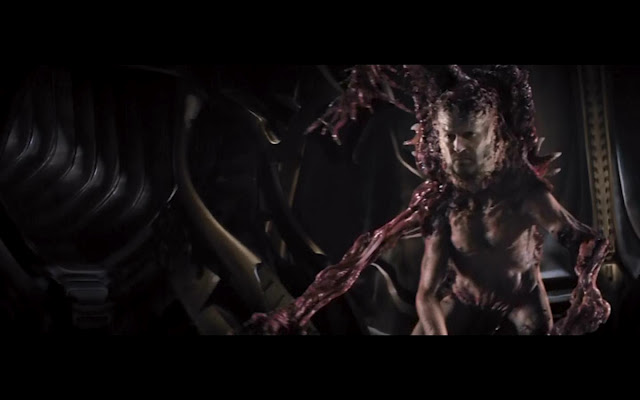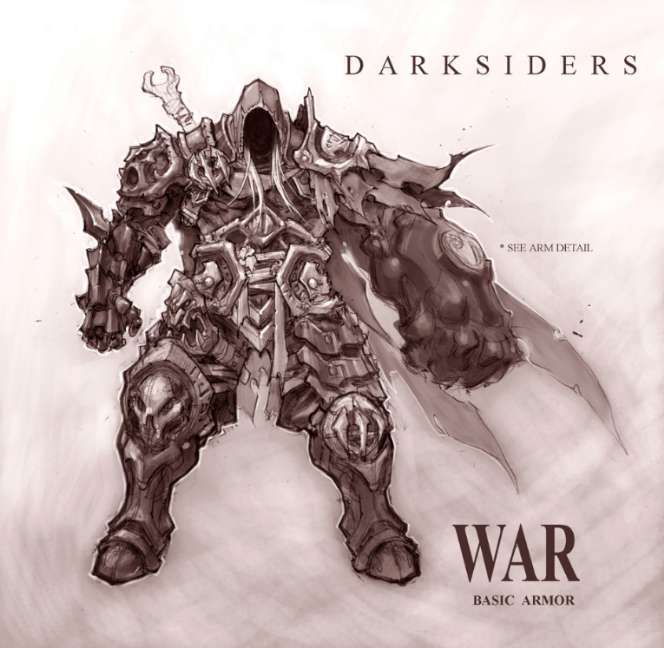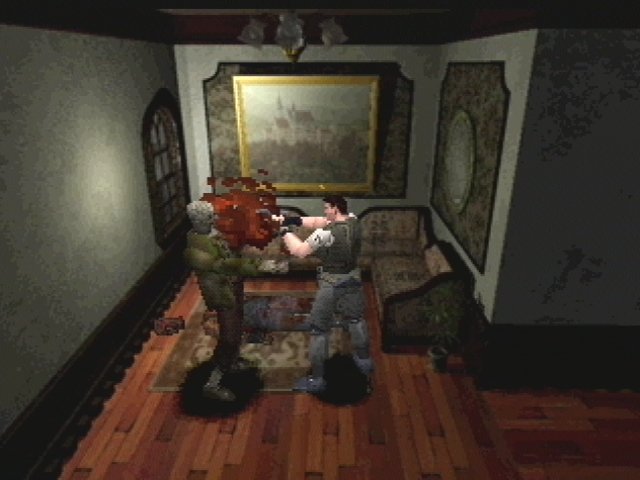Well, I'm back after a long and somewhat miserable Christmas
and New Year with perhaps one silver lining.
You see, one of my big presents for Christmas in 2012 were some Amazon
Gift cards, which I promptly used to get a few older games for my collection. One of these games was called Koudelka and
I've spent the last few weeks playing it.
When I finished, I had two big thoughts about Koudelka. The first, was how much the fixed cameras
annoyed me, having to constantly switch perspectives and being only able to
move and see within a specific area. And
the second was how much I enjoyed the atmosphere, because the fixed cameras
kept the game very focused, very intense, and with a lot of details for a
relatively unknown release at the time.
As such, I wanted to talk a little about fixed cameras.
 |
| Sure don't make em like this anymore. More's the pity... |
Fixed
cameras were used in place of free moving cameras for a number of reasons in
the early days of 3d gaming. There were
limitations on how the camera could or should be moved without having it
dissolve into the scenery or cause graphical distortions, it meant having to
create less environments since you could basically show the player exactly what
you wanted to and how you wanted them to see it, it was easy to use for puzzle
mechanics, etc. However, once free
moving cameras using the second analogue stick of most controllers became the
norm, fixed cameras sort of fell out of fashion, associated more with the tank
controls of Resident Evil rather than the atmosphere. I think this is a mistake. Now, I'm not saying that everything was
better with fixed cameras. They had a
number of issues and limitations. But,
they were a specific kind of tool for a specific kind of job. And I think that, like most tools, there is
an art to wielding it effectively that too many people are unaware of.
Fixed
cameras, to me, are a little like cinematography tricks. They can be used most effectively for
emphasizing mood. Placing a camera at a
low angle can make the main character seem larger than life, either to
emphasize power or to deceive them about what is coming. Placing it at a higher angle can emphasize
weakness, useful for chase sequences or introducing elements that could harm
players. It is key in showing rather
than telling a player how they ought to feel. In this same vein of thought, I am reminded of
an adage which made me truly appreciate cinematography.
Bob Chipman, also known as Movie Bob on the Escapist, once compared the original John Carpenter's "The Thing" to theremake/prequel in 2011. While he praised
the original's practical effects, as having something to interact with in a
movie always seems more natural than CGI, he said something else that caught my
interest. "A lot of the old
practical effects only looked good from a certain angle, so they forced film
makers to shoot in a very specific way."
Fixed cameras are a lot like that idea.
There are some scenes which will have more meaning or will only make
sense if viewed from a specific vantage point.
This is one of the driving ideas behind extended cut scenes in
gaming. However, because fixed cameras
no longer limit how a scene can be shot, many developers seem to be getting
sloppier with their work, at least in my eyes.
They haven't learned the basics of framing a scene. If you want to talk cinematic game design,
that is, game design that takes cues from cinema, fixed cameras are an
important tool. Because they are
basically like looking through a camera in a movie that the audience cannot
control.
 |
| Crappy CG of the 2011 Thing vs gorgeous practical effects of John Carpenter's version |
 |
| Not hard to see which took more effort to create shot to shot, is it? |
Another
benefit of fixed cameras comes from developers on a limited budget. Most game designers like to break into the
games industry using 3d games based off of existing engines. However, this leads to a small problem. You need to model and texture every wall,
every floor, every ceiling, and every piece of furniture, plant, npc, etc. in
any given area. If they used a fixed
camera, only one vantage point would need to be modeled because that would be
the only vantage point seen. It could
save on development time and on costs.
However, because of how easy it is to misuse fixed cameras, they would
need some basic skills with cinematography, as outlined above.
Because of
that, I actually believe it might be useful for many aspiring developers to
start with fixed cameras. Use them to
create more inexpensive 3d games and learn some basic cinematography
skills. One thing in particular I think
that not only aspiring developers but even seasoned veterans could learn from
fixed cameras is the adage, "Is it necessary?" In the modern games industry, excess is a
major problem. Everything, from
characters to environments are overblown, over designed, and often garish. Ask the simple question of, "does seeing
all this do anything for the player?"
Fixed cameras are all about economy.
What can be in a shot, what developers need to create for that shot,
what can be conveyed with that shot, etc.
I think that going back to basics might help with some of the excess,
slim down the games industry from the bloated monster needing to churn out
cookie cutter AAA hits into a leaner, more experimental beast that is unafraid
to try something new.
 | |
| I love Darksiders, but look at this image. This is the basic armor. Do we really need all those lines, details, and polygons on the basic model? Is it necessary at all? Why? |
 |
| Koudleka wasn't the only game to benefit from the use of fixed cameras. Parasite Eve, Resident Evil, and countless others were made better through the focus they provided. |
This is not base nostalgia,
either. It is something that has been
expressed by other gamers and reviewers in recent years. Joe Vargas, better known as Angry Joe from
Angryjoeshow.com, when reviewing Resident Evil 6 said something to the effect
of "if Capcom cannot generate horror without all the overblown, crowdpandering, idiocy that was RE6, then perhaps they should return to the fixedcamera controls, since at least there you can build atmosphere."
 |
| Lackluster quicktime events more suited for an action game than Resident Evil 6...you SURE you don't wanna go back to fixed cameras, Capcom? |
I think
fixed cameras are an under utilized tool.
Even if they were done out of limited graphics, not every game needs to
look as pretty as Halo 4 or Call of Duty 4.
It is okay to have a game with limited, even polygonal graphics if the
gameplay and/or story is solid. After
all, look at Minecraft. It is blocky, it
isn't the shiniest or most impressive of graphics, and the monsters are almost
laughable, but it stands on its own because it is fun. Sadly, even indie designers prefer to avoid
using fixed cameras by using user controlled cameras or games that cannot make
use of it, like 2-d games.
 |
| Not every game has to be this sleek to be good |
Closing out
this discussion, let me just say two things.
First, I encourage people to try and release more games with fixed
cameras, provided they can do it right.
Older Playstation and N64 games with these fixed cameras, and even into
the PS2 era, were able to be more experimental, use them in unique ways, or
just create a riskier game with them because there was less of a cost
investment due to not having to make as many environments. There's no reason why indie developers or
even mainstream developers and publishers, Capcom, Square, Konami, etc. can't
use these advantages to take a few risks, test the water with new properties,
or just do something new. If it costs
less and it fails, it's less of a risk.
If it costs less and it succeeds, you get a high return on a low
investment. If you put all your money on
the big AAA games or the samey numbered reiterations of sports games or what
have you, then...you're asking to fail when the industry eventually turns on
your "tried and true" game design.
 |
| Where have all the fixed cameras gone? As time passes... |
Second, I
want to say this. Don't feel like you
HAVE to used fixed cameras. They are a
tool and a useful one, but not for every game.
A game like Contra Rebirth or New Super Mario Brothers Wii U don't need
a fixed camera and would actually be hindered by it. However, understand what you can do with a
fixed camera. The cinematic way of
building atmosphere without giving exposition or even having the characters
speak at all. How one shot can say all
that it needs to in order to make a character in awe, uneasy, or at peace. Because those skills will help immensely when
the time comes to use the free moving cameras, since you'll know how to frame a
shot.
 |
| Not every game NEEDS a fixed camera, but the lessons you can learn from them shouldn't be forgotten. |
Fixed
cameras are part of the game industry's history. We shouldn't forget about them. We should learn from them. Learn how they were used and to what effect. It will undoubtedly help game design in the
long run.
Anyway, that's my take on fixed cameras. Yeah, they can be annoyingly restrictive at
times, but sometimes a game NEEDS to be restrictive to convey the right
message, mood, or atmosphere...or keep costs down. Something to remember.



No comments:
Post a Comment